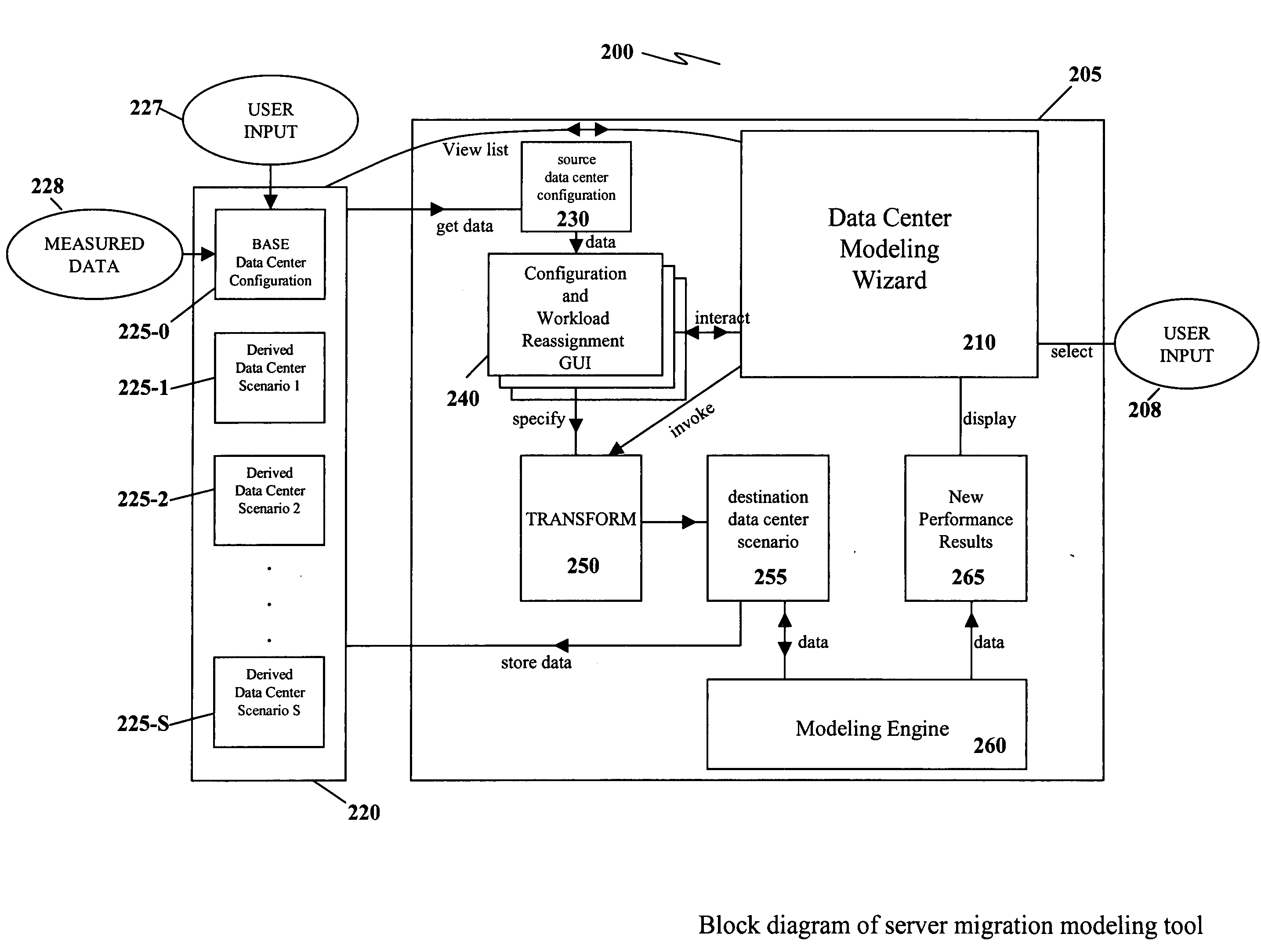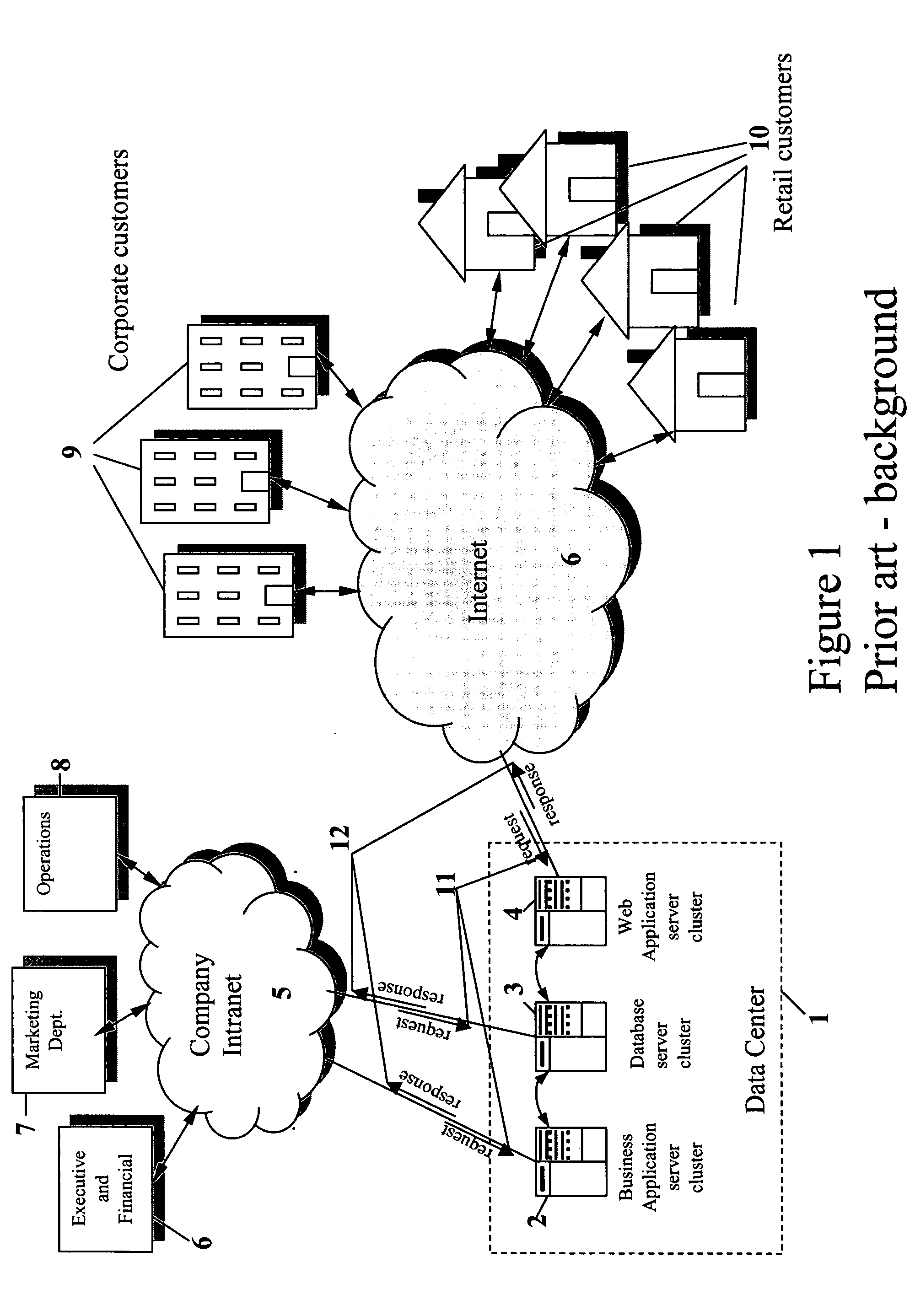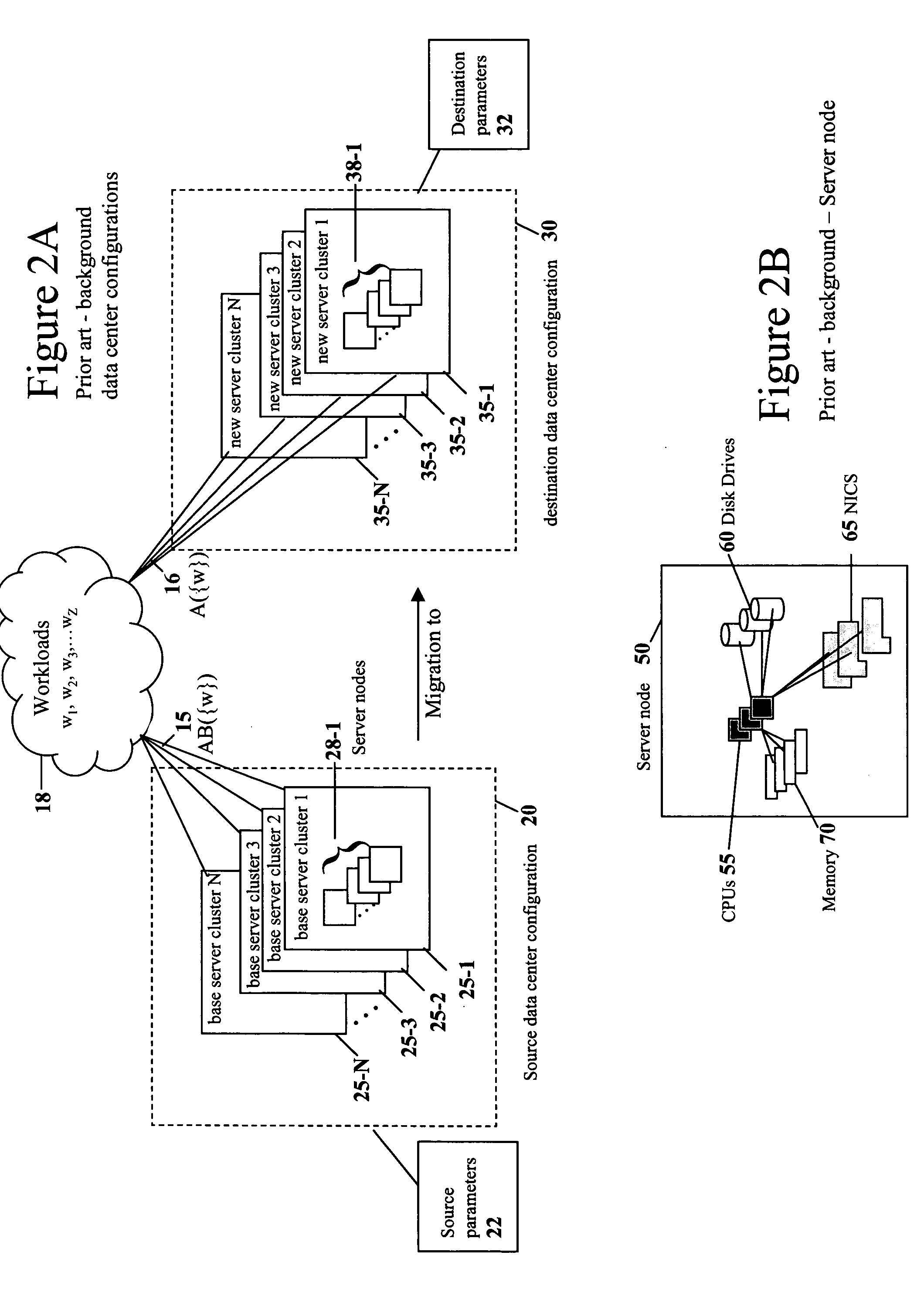Apparatus and method for capacity planning for data center server consolidation and workload reassignment
a data center server and capacity planning technology, applied in the field of computer server capacity planning, can solve the problems of inability to effectively choose among the myriad of server consolidation options by trial and error or rules, and the number of server consolidation options in a large modem environment is enormous, so as to facilitate scaling performance metrics, simplify the calculation of service times, and improve the ease of use and flexibility of capacity planning tools
- Summary
- Abstract
- Description
- Claims
- Application Information
AI Technical Summary
Benefits of technology
Problems solved by technology
Method used
Image
Examples
example 1
[0130]Server consolidation example (Consolidate 2 servers to 1).
[0131]Assume 3 servers. ServerA has 2 disks (a1 and a2) and one NIC (a1). ServerB has one disk (b1) and two NICS (b1 and b2). ServerC has three disks (c1,c2,c3) and two NICs (c1,c2)
tserverND(t)DISKS(t)NN(t)NICS(t)1ServerA21, 2112ServerB1322, 33ServerC34, 5, 624, 5kserverdiskDSVR(k)1ServerAA112ServerAA213ServerBB124ServerCC135ServerCC236ServerCC33KServerNICNSVR(k)1ServerAA112ServerBB123ServerBB224ServerCC135ServerCC23
[0132]To consolidate the work on serverA and serverB to ServerC, the Capacity Manager user:[0133]1. Creates a new Server Consolidation scenario.[0134]2. Creates a new Reassignment[0135]3. Chooses ServerA and ServerB on the “Choose source server” screen[0136]4. Chooses ServerC on the “Choose destination servers” screen
[0137]Server consolidation affects all workloads, so for any workload
F(1,3,w)=1 (A to C)
F(2,3,w)=1 (B to C)
F(3,3,w)=1 (work on C stays put)
All other values of F are zero.
[0138]Capacity manager i...
example 2
[0140]Workload Reassignment Example
[0141]In the above example, assume two workloads “Sales” (w=1) and “Inventory” (w=2). The Capacity Manager user wishes to model the effects of moving 60% of the Sales from Server C to ServerA, while moving 40% of Inventory from ServerC to ServerB.
[0142]The sequence of steps from the GUI is:[0143]1. Create a Workload Reassignment Scenario[0144]2. Create a reassignment with the “Specify reassignment details” screen[0145]3. Call the first reassignment “move Sales”[0146]4. Select “Sales” workload on the “Select workload to reassign” screen[0147]5. Select ServerC as the source server on “Select source server” screen[0148]6. Enter a value of 60% in the reassignment column for “ServerC” on the “Select Work to Reassign” screen[0149]7. Select Server A as the destination server on the “Select destination servers” screen[0150]8. Create a second reassignment called “Move inventory” with the “specify reassignment details” screen.[0151]9. Select “Inventory” work...
PUM
 Login to View More
Login to View More Abstract
Description
Claims
Application Information
 Login to View More
Login to View More - R&D
- Intellectual Property
- Life Sciences
- Materials
- Tech Scout
- Unparalleled Data Quality
- Higher Quality Content
- 60% Fewer Hallucinations
Browse by: Latest US Patents, China's latest patents, Technical Efficacy Thesaurus, Application Domain, Technology Topic, Popular Technical Reports.
© 2025 PatSnap. All rights reserved.Legal|Privacy policy|Modern Slavery Act Transparency Statement|Sitemap|About US| Contact US: help@patsnap.com



